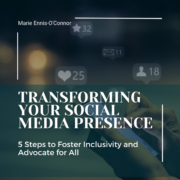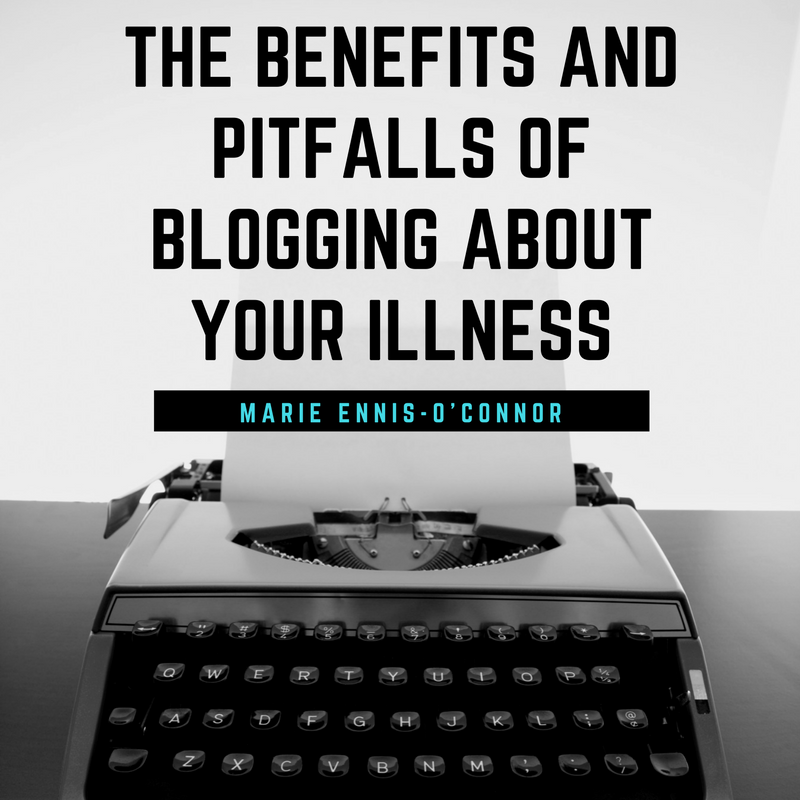Patient Advocacy: 15 Winning Ways to Attract More Readers to Your Blog
Have you ever had the sinking feeling of pouring your heart and soul into writing something you felt sure people will want to read, only to find this isn’t the case? That, apart from your Mom and your best friend, it feels like no one else is reading your blog?
Having your own blog is a powerful way to boost your online advocacy. Blogging shows your commitment and passion for your cause. It’s also an extremely effective way to build a community and engage more people in your cause. However, it can be disheartening to find yourself with so few readers.
If you want more than a handful of people to discover your valuable content, then this post is for you. I’m going to show you how to find more readers for your blog and promote it to a wider audience. The following tips come from my own experience as a blogger over the past nine years, along with tips from some of the smartest patient bloggers I know. I feel sure you’ll find their advice helpful as you focus on growing your own blog and building your readership.
Let’s get started right away with our first tip.
1. Optimize Your Blog’s UX
Let’s begin with how your blog looks. What is the user experience (UX) like for your readers? How easy is it to navigate around your blog? Susan Rahn gave her blog, StickIt2Stage4, a complete overhaul this year. “I updated the template to something that was more aesthetically pleasing and easier to navigate,” she told me when I asked her for her best tips on creating a better blog.
You should check also to see how easy your blog is to read on mobile devices. Does your site load quickly? A good site will load in 2 seconds. If your blog is taking longer than that, consider that around 40% of people will leave a site if it doesn’t load in 3 seconds (check your blog’s loading time with a tool like Load Impact).
2. Provide Helpful Information for Readers
While your blog may contain personal stories about your experience and that of others, it’s also a good idea to provide helpful resources for your readers. “Having pages that have helpful information such as organizations that offer conferences, support or help in some way – either financial or trips is very useful”, says Susan, “especially if you can personally recommend them.” Susan also suggests including a list of other bloggers that you read and can recommend to readers.
3. Make It Easy For Readers to Find Information on Your Site
Providing helpful information is great, but you also need to be sure that readers can find that information. By adding categories and tags to your posts, you make it easy for readers to find the information they need when they come to your blog. It also increases views on your other posts tagged with the same keywords.
4. Hook Your Readers with a Great Headline
When it comes to writing your posts, spend some time creating a great headline. Your headline is the first (perhaps only) impression you make on a prospective reader. A good headline frames your content. No matter how amazing your content is, few people are going to click through to read it if they’re not immediately captivated by your headline. The kind of headlines which perform best include:
- “How To” – e.g. “How to Prepare for Surgery”
- List-Style – e.g. “5 Tips for Dealing with Chemotherapy”
- Questions – e.g. “What is Chemo-Brain?”
Try adding “power” words and phrases to your headline, (such as best, tips, empowering, challenging) to create more engagement. Download a list of 90 headline power words here.
5. Keep Readers’ Attention with Your Introduction
When you have hooked readers with an irresistible headline, you want to keep them reading. Start by asking a question, or share a striking quote, a startling statistic or a personal story. Don’t make the intro over-long or your readers will quickly lose interest. Aim for around the 100-word mark. Make every word count. Establish your rhythm and pace with those first words – you can slow the rhythm down in the body of your post later if you wish.
6. Add Visual Appeal
We live in a visual world. If content is king, then visual content is queen. And when it comes to creating visual content, don’t be tempted to reach for the nearest stock photo. These days there’s no excuse for using boring stock images. In this post I share some of my favorite places to source images for free to enhance your social media posts. A good tip is to create your own graphics with the title of your blog and/or your name and include it each time you share a link to your blog on social media. People will soon start to recognize your own unique “brand.”
7. Maintain a Consistent Posting Schedule
To create and maintain interest you need to post consistently to be able to stay in front of your audience’s eyes. Dee Sparacio, who blogs at Women of Teal, says it’s important to maintain “a pretty regular schedule so your followers are not visiting your page and seeing an old post.” Barbara Jacoby, of Let Life Happen, told me that the only thing that she has ever done to promote her blog was “to consistently write and post a weekly blog and research and post a daily ‘In the News’ article.”
Nancy Stordahl, the creator of Nancy’s Point, also advocates for consistency. “Try to post consistently if you want to develop a loyal readership,” she says. “This takes commitment (work), which means posting on a regular schedule that works for you. This might be weekly, every other week or monthly. This way readers know what to expect, plus it keeps you focused. I post weekly (usually the same day) because that’s what works for me. Consistency is key.”
One of the best ways to keep a consistent schedule is to create recurring content on your blog. Readers will then come to expect and look forward to this content each week. Examples could be creating a weekly round-up post as I do on Journeying Beyond Breast Cancer, or a Monday Motivation post.
8. Leverage Guest Blogging
Whether you invite a guest blogger to blog on your site, or you guest blog for someone else, guest blogging is one of the most effective ways to increase your blog’s traffic. Not only do you get the opportunity to build your authority and increase your visibility, you can also leverage the social following of your guest blogger when you mention them on social media. Beth Gainer, who blogs at Calling The Shots, endorses this strategy. “Offer to guest post for others’ websites,” she recommends. “I have published several guest posts, and my posts have been shared. It’s a great way of having others notice your blog.”
9. Respond to Comments
Have you ever taken the time to leave a comment on a blog and had no response? It’s disappointing and may well discourage you from commenting again. An active comments section is a sign to others that your blog is a community that cares and wants to help each other. Susan Rahn believes that this kind of interaction is important. “It lets readers know you are paying attention and you care that they are reading,” she says.
Take time to comment also on others’ blogs. “By leaving a meaningful comment on a post, you not only build community with others,” says Beth Gainer, “but others can link to and get to know your blog. I try to leave thoughtful comments on others’ blogs because I am a part of a larger community of writers, and it helps to reach out. As an indirect result of my posting comments, bloggers have visited my site and left comments.”
10. Share Your Content on Social Media
Whether it’s a Twitter, Facebook, Snapchat, or an Instagram account, being active on social media is the best way to share your content with a wider audience. Dee Sparacio first set up a Twitter account with the name of her blog, @womenofteal to share her content. Then she started a Facebook page, again using her blog name. Dee advises setting up a specific page for your blog (and not just sharing via your personal Facebook account). “By having this blog page, I have people who follow me for my advocacy work follow that page and not my personal page.”
Susan Rahn also recommends connecting your blog to all your social media accounts. She has added a blog link to her Instagram bio too. “So all I need to do is create an Instagram post and direct followers to the link in my bio.”
11. Re-Share Older Blog Content
According to Susan, “re-sharing a blog post from time to time that is relevant to current events or conversations has been helpful” in growing her blog. “New followers may not have gone back through archives to read past posts so it’s new content for them,” she points out. This is a super tip. I’d add to this by saying that it’s a good idea to go back to the original post and see if it needs updating in light of current news or developments. Do you need to update a statistic or fact? Is there new research you can add to the post? Or a quote or comment to make it even stronger second time round?
12. Make It Easy To Share Your Content from Your Blog
When more people share your content, you increase the chance of driving more visitors to your blog. Make sure your social sharing buttons are clearly visible. By making it easy for visitors to your site to share your content, you increase the likelihood that they will take this action. To generate even more shares, install Click to Tweet, a handy tool which generates one-click tweet boxes or links that can be shared throughout your blog or via email.
13. Grow Your Online Followers
“Seek and ye shall find,” recommends Terri Coutee, founder DiepCFoundation, a non-profit organization providing information on options for breast reconstruction after mastectomy. “I hold fast to this mantra even after blogging for over 3 years,” she says. “Just as with any business, bloggers must find who is interested in their content. Look for social media communities talking about what your blog content focuses on and cast a wide net. Don’t rely on just a few hashtags and groups. Visit those hashtags, those groups and see who they are connected to. Friend, like, re-tweet, and follow these people. Share your content across more than your own “wheelhouse” because when you least expect it, someone in one of those groups may need what you’re blogging about.”
The more people who follow you on social media, the more you can amplify your content and increase your social shares. Dee Sparacio recommends @mentioning (tagging) a person or an institution whenever you reference their research on your blog. This not only brings their attention to your blog, but it’s also a way to grow your followers. The key here is to find followers who share your interest and will be most likely to share your content. A great way to find like-minded followers is to join a Twitter chat related to your disease or condition, such as #gyncsm, #lcsm, #bcsm, etc. If you’re new to Twitter chats, you can learn more about how to take part here.
14. Use Relevant Hashtags
Hashtags are a powerful way to maintain your visibility on Twitter and Instagram and boost engagement with your followers. According to Twitter’s own research tweets with hashtags show a 100 percent increase in engagement (clicks, retweets, likes and replies). Hashtags can also expand the reach of your message beyond just those who follow you to help you grow your network. Be sure to include the relevant hashtags when you share a link to your blog on social media. For more information on using hashtags strategically, read Everything You Ever Wanted To Know About Hashtags in Healthcare…But Were Afraid To Ask!
15. Send an e-Newsletter to Subscribers
Newsletters can help keep your blog top of mind with readers. Use it to send an email digest of your most recent blog posts or notify your subscribers when you publish a new post. “I would advise anyone who wants to increase readership to her/his blog to consider sending out a monthly or weekly email with links to new posts and possibly one or two older ones,” recommends Nancy Stordahl. “I became very frustrated with Facebook’s algorithms because it seemed no one was seeing posts I shared. Having your own email list puts you and your readers in control. In my emails, I also share a couple of articles that have been in the news, or that I think might be of interest to my subscribers. Sometimes I share something personal and I often bounce around ideas. I love my subscribers and always value their input!”
Both Susan and Nancy use MailChimp as their email list provider. “I added a MailChimp widget that would popup to invite readers to subscribe (even though they are very annoying),” explains Susan. “Through that widget, I was able to set up an email blast at a predetermined time after a new blog was posted.”
Some bloggers are reluctant to set up a mailing list because they think it’s going to be a lot of hard work. Nancy has this advice to share: “Mailchimp is an easy setup and it’s free up to 2,000 subscribers. And don’t worry about how many subscribers you have. It takes a while to build a list of readers that truly want to read your posts. The ones that stick around are gems. It’s worth the extra work, for sure.”
If you’re interested in setting up your own email list, read How to Build Your Email List The Right Way to learn more.
Be Real, Be Authentic, Be You!
A final piece of advice is to be yourself and write from the heart. In Susan’s words, “Just be authentic. Be true to who you are. Let readers get to know you through your blog as if they are sitting down having coffee and conversation with you.”
Catherine Foy, who blogs at My Triple Negative Life, echoes Susan’s advice. “Be yourself when writing (as if you are talking/giving advice to a friend),” she says. “Don’t concentrate on follower numbers. Engage with like-minded people through social media or chats, follow people or organizations that you admire. Always be true to yourself and treat everyone online with respect.”
While it may be gratifying to have lots of blog readers, those numbers aren’t really what count. “We write for a reason and purpose,” Terri Coutee reminds us, “Telling your story should ultimately have the end goal of making a difference in someone’s life.” Even if you have only a handful of readers, you still have an incredible power. You have the ability to connect directly with every one of those readers and impact their lives. Perhaps it’s one piece of information which you share that’s the missing puzzle piece that someone needs right at that very moment of reading it.
If telling your personal story is the lifeline that even one reader needs to be able to hold on to hope, then your blog will be a precious gift to the patient community. As writer, Connie Rosser Riddle told me, the thing that sustains her blogging is writing from her passion. “Throughout life, I’ve been fascinated by stories, whether they were ones I read in books, or those of real life unfolding,” she explains. “Sometimes my blog posts concern my experience having triple-negative breast cancer. Those stories come from cancer intersecting with daily life, finding meaning in the moments of coping with reality and discovering beauty along the path.”
If you’d like to learn more about setting up your own blog from scratch, check out this guide.

A Stanford Medicine X e-Patient scholar, Marie Ennis O’Connor is an internationally recognized keynote speaker, writer, and consultant on global trends in patient engagement, digital health and participatory medicine. Marie’s work is informed by her passion for embedding the patient voice at the heart of healthcare values. She writes about the experience of transitioning from breast cancer patient to advocate on her award-winning blog Journeying Beyond Breast Cancer.










